My journey in software development began in childhood, writing BASIC programs on my Commodore 64. As a teenager, I transitioned to an IBM AT machine, continuing in BASIC before moving on to Visual Basic, Pascal, and eventually C/C++. My first experience with Linux sparked a deeper interest in open systems, and over time, it became my primary working environment. From there, I shifted to Java as my main development language, later expanding my expertise to interpreted languages like Perl and Python, as well as mobile development for Android.
With 30 years in the field, I’ve seen technology evolve firsthand—from low-level programming to modern software architectures. While my technical foundation remains strong, I’ve come to appreciate that software development isn’t just about writing code; it’s about solving real problems, understanding users, and building teams that can create impactful solutions.
Here a random selection of software I wrote.
Modern & meaningful
Example microservices implementation
An example of a microservices implementation using Spring Boot for a fictional lending company.
See it on GitHub: https://github.com/robyf/microservices.
dbpatcher
A tool for applying incremental updates to a MySQL or MariaDB database.
See it on GitHub: https://github.com/robyf/dbpatcher.
gradle-dbpatcher-plugin
A Gradle plugin for dbpatcher.
See it on GitHub: https://github.com/robyf/gradle-dbpatcher-plugin.
gradle-jarinjar-plugin
A Gradle plugin for generating self-contained executable jar files.
See it on GitHub: https://github.com/robyf/gradle-jarinjar-plugin.
Retired projects
google-chat-linux
An unofficial desktop client for Google Hangouts Chat.
See it on GitHub: https://github.com/robyf/google-chat-linux.
MSysM modules
Additional modules for the MSysM system monitor for Linux.
See them on Maurizio Sartori's website: https://www.masarlabs.com/msysm/.
mailcgi
A cgi-bin based web email client. It allowed users to access their own mailboxes via web. Under the hook it was talking to the mail servers using standard SMTP and POP3 protocols. It didn't support MIME multipart encoded messages, only simple plain text ones.
etmnet
Internet access point for public places. It supported all the different kind of connectivity available at the time (PSTN, ISDN, LAN). End users would be able to use internet by buying prepaid cards. In every public place there could have been a single terminal or multiple ones connected through a LAN. In the latter case one of those terminals would act as server, managing the connection.
etmchat
Chat system for public places and internet. It allowed users to chat via internet, ascii and videotex terminals.
CBLock
Enabler/disabler for the restricted run mode of Windows 95.
It was developed for PC being used as public locations into internet cafes, pubs, and other public places.
By enabling the restrict run mode of Windows 95 it was possible to define which programs users can run, and which OS features are active (for example start menu, desktop icons).
High school classics
Formula 1
A statistics and history manager for the Formula 1 World Championship.
It tracks the final results of Formula 1 Grand Prixes, updating the World Championship standings and some other statistical data (for example number of wins, number of pole positions).
It was written between 1990 and 1995 and it's module based, with some of them written in BASIC and some in Pascal.
 Qualification results, displaying pole position and DNQ drivers.
Qualification results, displaying pole position and DNQ drivers.
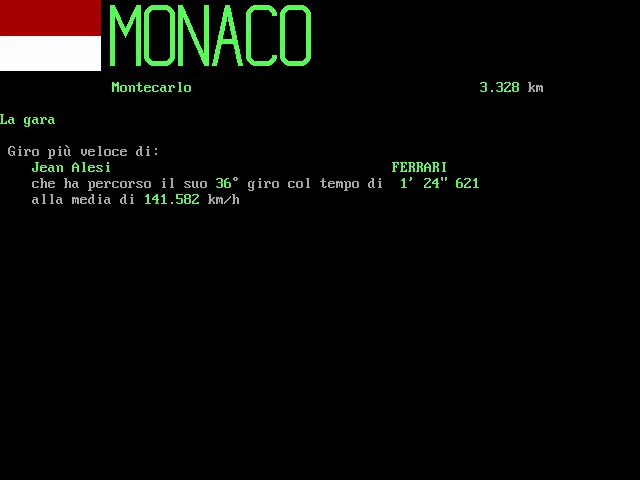 Race fastest lap, with time and average speed.
Race fastest lap, with time and average speed.
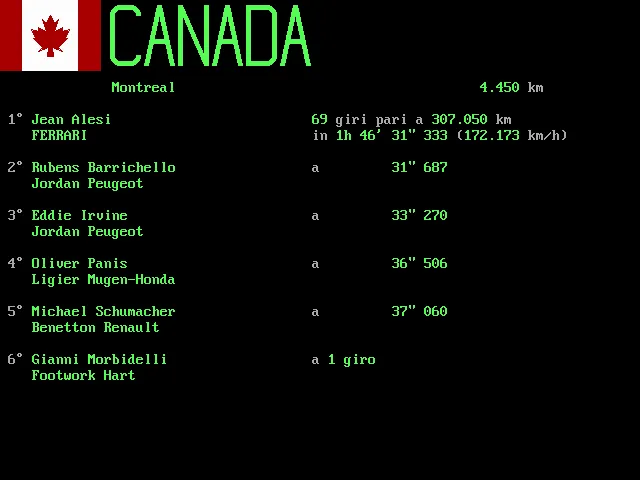 Race results with winner time and average speed and intervals.
Race results with winner time and average speed and intervals.
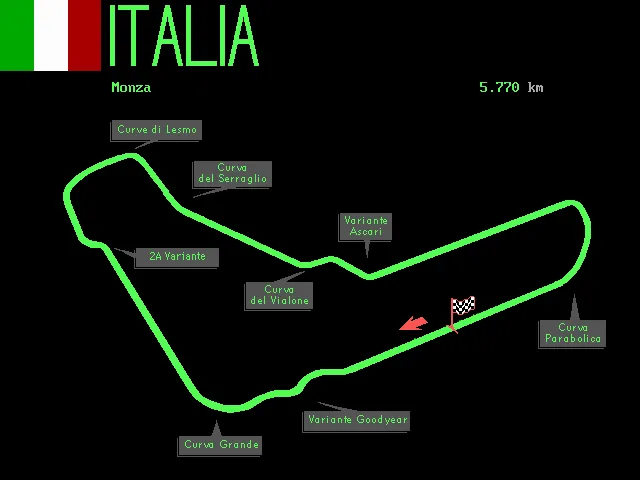 Track map with corner names.
Track map with corner names.
Serie A
An Italian "Serie A" football championship manager.
It updates the championship standings using match results.
It was written in 1992 using basic language.
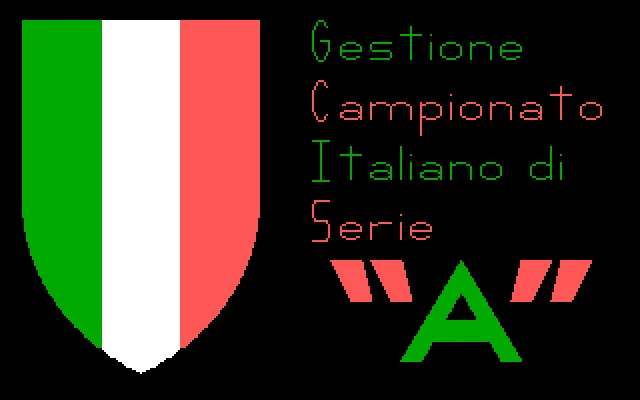 Splash screen.
Splash screen.
 Main menu.
Main menu.
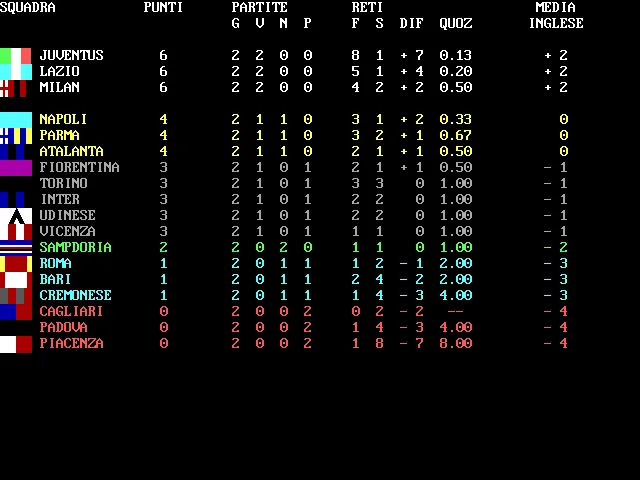 Current standings.
Current standings.
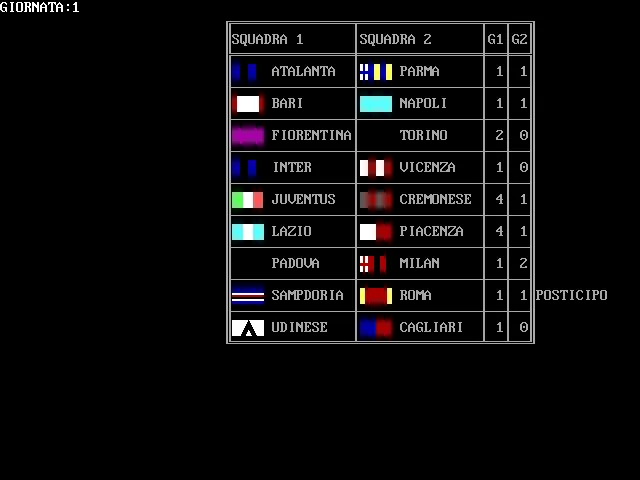 Games for a round.
Games for a round.
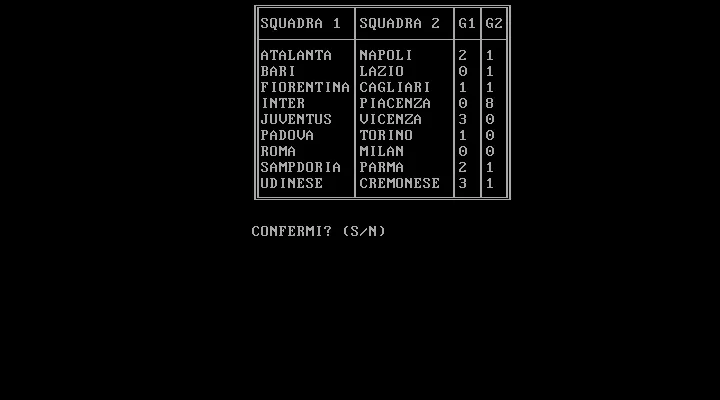 Results input.
Results input.
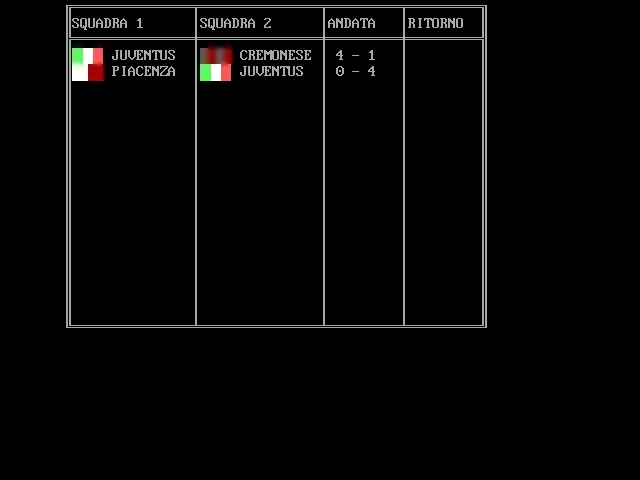 Games of a team.
Games of a team.